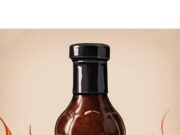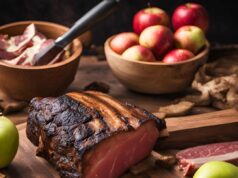Smoking meat is a time-honored technique that elevates ordinary cuts into flavorful masterpieces.
Understanding the appropriate smoking times and temperatures for beef, pork, and poultry is essential for achieving delicious results while maintaining food safety. This guide provides the ideal smoking temperatures for various meats, an overview of smoking times, and crucial health guidelines.
You will also find tips to enhance flavors and avoid common pitfalls, ensuring that your smoking experience is both enjoyable and successful.
Engage with this content to master the art of smoking meat.
Key Takeaways:
- Maintaining proper smoking temperatures is crucial for achieving tender, flavorful meat.
- Each type of meat has its own ideal smoking temperature, so it’s important to know the recommended range.
- Following health and safety guidelines and adding flavor-enhancing techniques can take your smoked meats to the next level.
Understanding Smoking Temperatures
Understanding smoking temperatures is essential for anyone aiming to perfect their smoked meat, as achieving the right internal temperature can significantly impact the outcome, distinguishing between a tender, juicy dish and one that is dry and lacking flavor.
The smoking process utilizes both direct and indirect heat, allowing the meat to absorb various flavors from smoking woods such as hickory, cherry, and apple while also reaching the necessary safety levels to eliminate harmful bacteria.
Direct heat involves placing the meat directly over the flames, which can create a desirable sear on the exterior but may also risk cooking the interior too quickly. Conversely, indirect heat requires positioning the meat away from the flame source, promoting slower, more even cooking that enhances tenderness.
Selecting the right type of wood is crucial for flavor development; for example, hickory imparts a robust smoky taste, while fruit woods provide a milder, sweeter profile. To ensure that your meat reaches the ideal internal temperature, using a digital thermometer is highly recommended. This tool offers precision that can help you avoid the disappointment of undercooked or overcooked results.
Why Smoking Temperature Matters
The smoking temperature plays a crucial role in the safety, tenderness, and juiciness of the meat you are preparing. By maintaining the appropriate smoking temperature, you can eliminate harmful bacteria while ensuring the meat retains its juices and develops a rich, smoky flavor that enhances the overall culinary experience.

Understanding the nuances of temperature can significantly elevate the quality of your smoked meats. For instance, beef benefits from higher temperatures that create a savory crust while preserving its moisture, leading to a tender bite. Conversely, pork requires a careful balance of heat to effectively break down its connective tissues without drying it out, resulting in a perfectly juicy slice. Chicken, with its leaner composition, demands a lower smoking temperature to achieve delicate tenderness without compromising its flavor.
Mastering these temperature variations is essential for anyone looking to achieve the best results in their smoked dishes.
Ideal Smoking Temperatures for Different Types of Meat
Understanding the ideal smoking temperatures for various types of meat is essential for any barbecue enthusiast aiming to achieve the perfect balance of flavors and tenderness.
Each type of meat—beef, pork, or poultry—has its specific internal temperature range that not only ensures safety but also enhances juiciness and flavor profile, ultimately elevating every gathering into a memorable culinary experience.
Beef
When cooking beef, particularly cuts like brisket, it is essential to pay careful attention to smoking temperatures. Aim for an ideal internal temperature of around 195°F to 205°F to achieve that melt-in-your-mouth tenderness. The artistry of smoking beef involves creating a perfect crust while maintaining the meat’s juiciness and flavor, often enhanced by choosing different types of wood, such as hickory or oak.
For a succulent ribeye, smoking it at a slightly lower temperature range of 225°F to 250°F for about 1.5 to 2 hours will result in a beautifully marbled piece of meat with a robust flavor. In contrast, flank steaks benefit from a quicker 90-minute smoke at 225°F, resulting in a lean cut that remains juicy when seasoned appropriately.
Utilizing smoking woods like cherry can impart a subtly sweet flavor, while mesquite contributes a more intense, earthy aroma. Experimenting with wood blends, such as hickory combined with a hint of apple, can introduce new layers of complexity to the overall taste profile, elevating a simple meal into a gourmet experience.
Pork
For pork, achieving the right internal temperature is critical, with an ideal smoking temperature of around 190°F for pulled pork to ensure a delicious and tender result. Understanding the intricacies of the smoking process not only guarantees safety from bacteria but also enhances the meat with rich flavors from the smoke.
It is essential to monitor the temperatures closely, especially for various cuts such as loin and ribs, which benefit from slightly different ranges—generally around 145°F for loin and 190°F for ribs—to unlock their best texture. Utilizing a meat thermometer will help you determine the perfect doneness while ensuring that the juices remain locked within, thereby elevating the overall taste.
Incorporating wood chips such as hickory or apple can impart a delightful smokiness, while basting with an apple cider vinegar mix throughout the smoking process will add moisture and complexity to every bite.
Poultry
When smoking poultry, it is crucial for you to reach an internal temperature of at least 165°F to ensure safety, particularly for chicken and turkey, which are more vulnerable to bacteria such as Salmonella. The smoking process enhances the flavor profile of poultry, resulting in a juicy and tender dish when employing the right techniques and using aromatic woods like apple or cherry.
For optimal results, you should smoke whole chickens at approximately 225°F for about 4 to 5 hours. Turkey may require a longer duration, typically around 6 to 8 hours, depending on its size. Duck, known for its rich flavor, benefits from a similar smoking time of 4 to 5 hours at the same temperature.
To elevate the flavor further, consider brining the poultry beforehand to add moisture and depth, and incorporating herbs or spice rubs can create an appealing crust.
Monitoring the internal temperature with a meat thermometer is essential to ensure that the poultry is both safe to eat and perfectly cooked.
Smoking Times: Overview and Chart
An overview of smoking times is essential for achieving optimal results when preparing smoked meat, as this directly impacts the flavor, texture, and safety of the dish. A smoking chart can serve as a valuable tool, providing guidance on the appropriate cooking times for various types of meat, including beef, pork, and poultry. This ensures that each type reaches its ideal internal temperature while maximizing juiciness and tenderness.
By understanding how to utilize this chart effectively, you can avoid common pitfalls in the smoking process. Different meats have varied smoking times due to factors such as thickness, fat content, and the specific heat source being used, whether that is charcoal, wood chips, or electric smokers. For example, while brisket may require a longer smoking period compared to chicken breast, the higher fat content in brisket allows for a more forgiving cooking process, helping to maintain moisture levels.
It is also crucial to consider the ambient temperature and outdoor conditions, as these can significantly influence cooking duration. By using a well-researched smoking times chart, you can enhance your skills and confidence in creating deliciously smoked meals.
Health and Safety Guidelines for Smoking Meat
Health and safety guidelines for smoking meat are essential for preventing foodborne illnesses and ensuring a safe culinary experience. By following safety standards such as maintaining proper smoking temperatures and being aware of bacteria like Clostridium, Salmonella, and Campylobacter, you can craft delicious smoked dishes while safeguarding your health.
To achieve optimal safety, it is crucial to monitor the internal temperature of the meat with a reliable thermometer, ensuring that it reaches safe minimum temperatures to eliminate harmful pathogens. For instance, poultry should reach an internal temperature of at least 165°F, while pork and beef should reach 145°F.
Practicing good food handling techniques, such as using separate utensils for raw and cooked meats, washing hands thoroughly, and keeping surfaces clean, can further minimize the risk of cross-contamination. By adhering to these guidelines, you can enjoy the rich flavors of smoked meats without compromising your health.
Tips for Enhancing Flavor and Avoiding Common Mistakes
Enhancing the flavor in smoked meat requires your attention to detail, from seasoning and marinating to selecting the right smoking techniques. Avoiding common mistakes is essential for a successful smoking experience. Understanding how to balance flavors and effectively utilize smoking wood can elevate your barbecue, allowing the natural juiciness of the meat to shine through.
To enhance taste, consider experimenting with dry rubs that include a blend of spices such as paprika, garlic powder, and brown sugar; these can create a flavorful crust that locks in moisture. Marinating the meat beforehand not only infuses it with additional flavor but also tenderizes tougher cuts, ensuring each bite is unforgettable.
When selecting wood for smoking, options like hickory, apple, or cherry can impart unique flavors that complement the meat beautifully. It is crucial to avoid over-smoking, as this can ruin a delicious cut and create an overpowering experience. Staying mindful of temperatures and cooking times will also help you achieve the perfect doneness and flavor balance.
Frequently Asked Questions
What is the recommended smoking time and temperature for beef?
The recommended smoking time for beef is 1-2 hours per pound at a temperature of 225°F. This will result in a tender and juicy smoked beef.
Can I use the same smoking time and temperature for all cuts of pork?
No, different cuts of pork require different smoking times and temperatures. For example, pork ribs should be smoked for 4-6 hours at 225°F, while pork shoulder needs 12-16 hours at 225°F for best results.
What is the ideal smoking time and temperature for poultry?
The ideal smoking time and temperature for poultry is 3-4 hours at 250°F. To ensure safety, the internal temperature of the poultry should reach 165°F before consumption.
Can I adjust the smoking time and temperature for a larger or smaller piece of meat?
Yes, you can adjust the smoking time and temperature depending on the size of the meat. It is recommended to increase the smoking time for larger cuts and decrease it for smaller cuts to achieve the desired tenderness and flavor.
Is there a difference in smoking times and temperatures for different types of wood?
Yes, different types of wood can affect the smoking time and temperature. Hardwoods like hickory and oak produce a slower and longer smoke, while fruit woods like apple and cherry produce a sweeter and lighter smoke. It is important to use the right type of wood for the meat you are smoking.
What is the minimum smoking time and temperature for safe consumption of smoked meats?
The minimum smoking time and temperature for safe consumption of smoked meats is 165°F for poultry, 145°F for pork, and 145°F for beef. It is important to use a meat thermometer to ensure the meat has reached these temperatures before serving.




















































